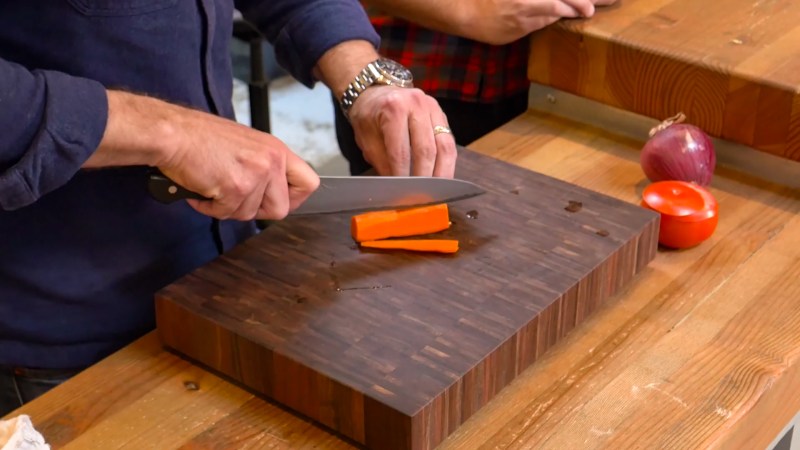
One of the biggest perks of cooking is getting to play with knives. It’s something all our parents forbade, but now, for better or worse, we’re grown-ups and can do what we want. If you’re serious about honing your cooking craft or work in a professional kitchen, your knives are your most important kitchen tools. Over time they become an extension of your hand and you’ll impress even yourself with your knife skills.
- Nakiri knife: Kai Wasabi Black Nakiri Knife, 6 1/2-Inch
- Santoku knife: Shun 7-Inch, Hollow Ground Santoku
- Meat cleaver: 7-Inch Kiaitre Cleaver Knife
- Chef’s knife: Wüsthof Classic 8-Inch Chef’s Knife
- Utility knife: Mercer 5-Inch Utility Knife
- Butcher’s knife: Dalstrong 14-Inch Bullnose
- Carving knife: Mercer Culinary Millennia Granton Edge Slicer 14-Inch
- Bread knife: Henkle’s Forged Premio 8-Inch Bread Knife
- Kitchen shears: OXO Good Grips Multipurpose Kitchen and Herbs Scissors
- Steak knife: J.A. Henckels International 8-Piece Steak Knife Set
- Paring knife: Mercer Culinary Genesis Forged Paring Knife
- Boning knife: Zwilling J.A. Henckels Professional S Flexible Boning Knife
- Fillet knife: Wusthof 4622-7 Classic 7-Inch Fillet Knife
- Peeling knife: Wusthof Classic 2.75-Inch Peeling Knife
- Fluting knife: Wusthof CLASSIC Fluting Knife
- Trimming knife: Lamson Fire Forged 2.875-Inch Trimming Knife
- Garnishing knife: LaLiHa Crinkle Cutter Garnishing Knife
- Cheese knives: WoneNice Premium 6-Piece Cheese Knives Set
- Tomato knife: Lamson Fire Forged 5-Inch Tomato Knife
- Kitchen knife safety
When it comes to choosing kitchen knives, there are two camps: Japanese or German steel. In short, Japanese steel is known for precision cuts and an edge so sharp you can split a hair, while German steel is known for durability and balance and is a workhorse in a professional or home kitchen. This guide will feature both types of kitchen knives, plus other cutting essentials, as some tasks in the kitchen lend themselves better to a certain blade.
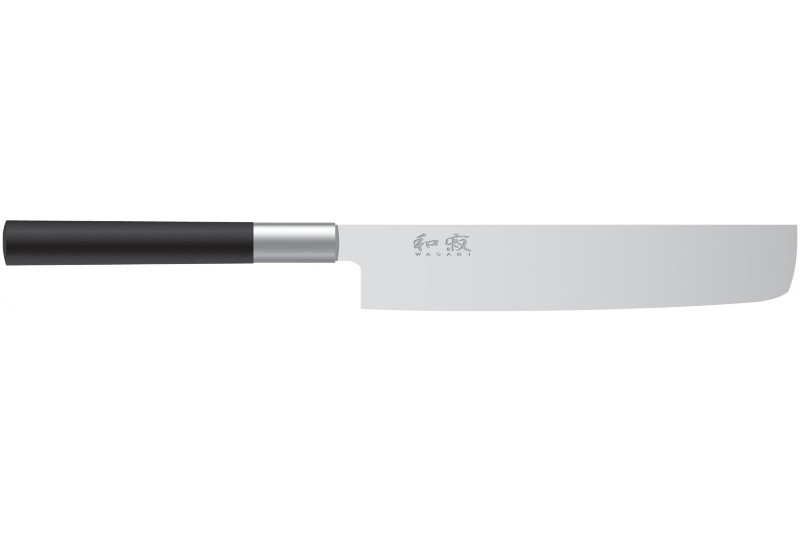
Nakiri knife: Kai Wasabi Black Nakiri Knife, 6 1/2-Inch
The nakiri knife (or Nakiri bōchō) is another Japanese-style blade very similar to the santoku but more specialized for vegetables. Its flat blade makes it easy to slice all the way to the cutting board without rocking or sawing, and it’s perfect for cutting lengthwise through vegetables like eggplant. The blade shape is also good for scooping up prepped veggies. The Kai Wasabi Black Nakiri Knife, 6-1/2-Inch is a beautiful knife that performs well.

Santoku knife: Shun 7-Inch, Hollow Ground Santoku
The Japanese are the originators of the santoku, so it’s not surprising they’re still making some of the best versions of this knife. These knives are similar to chef’s knives but are shorter and thinner. The flat blade lends itself to more of an up-and-down chopping motion instead of the pendulum-slicing motion of a traditional chef’s knife. These are excellent for precision finer mincing, slicing, and dicing. This Shun 7-Inch, Hollow Ground Santoku is the way to go.
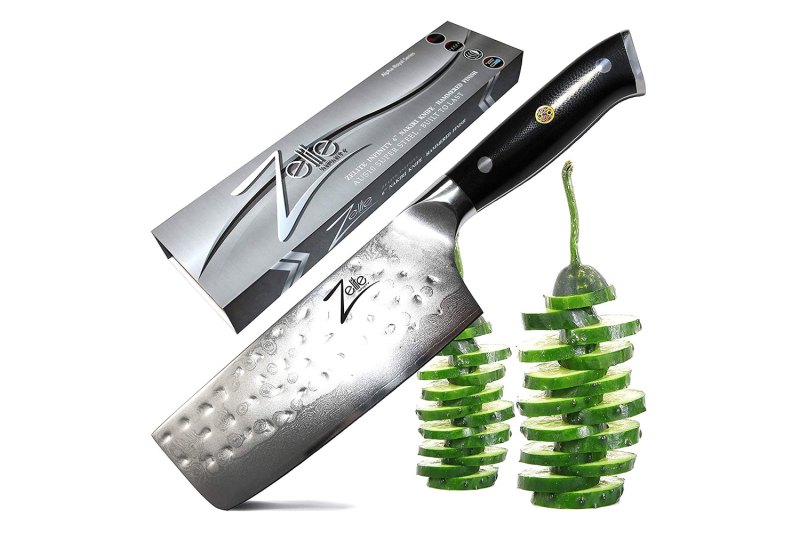
Meat cleaver: 7-Inch Kiaitre Cleaver Knife
The meat cleaver is a beast among knives, perfect for slicing through thick meat like ribs or cutting through thin bones like poultry bones. This 7-Inch Kiaitre Cleaver Knife may look Japanese, but it’s a high-carbon German steel and will be your deadliest knife in your kitchen.
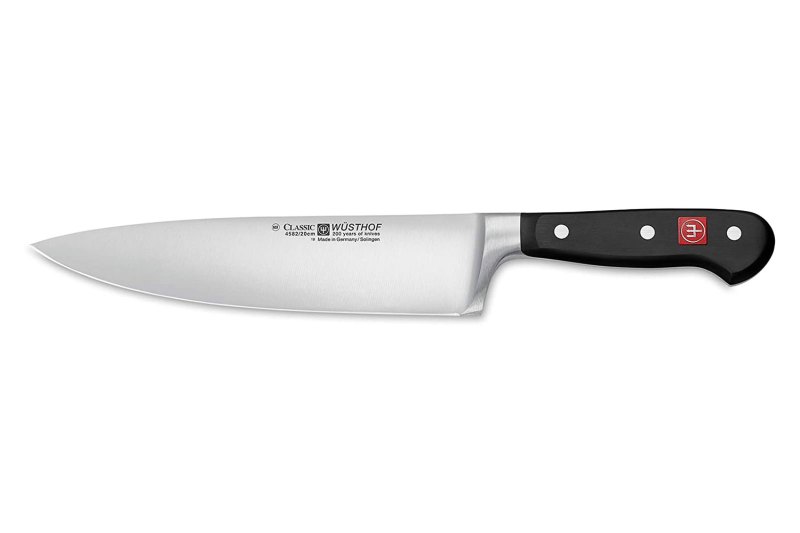
Chef’s knife: Wüsthof Classic 8-Inch Chef’s Knife
If you have just one knife in your kitchen, it should be a chef’s knife. They can slice, dice, chop, debone, and fillet. You can’t beat the quality and craftsmanship of a Wüsthof classic 8-Inch chef’s knife, and you won’t find a better all-around knife.
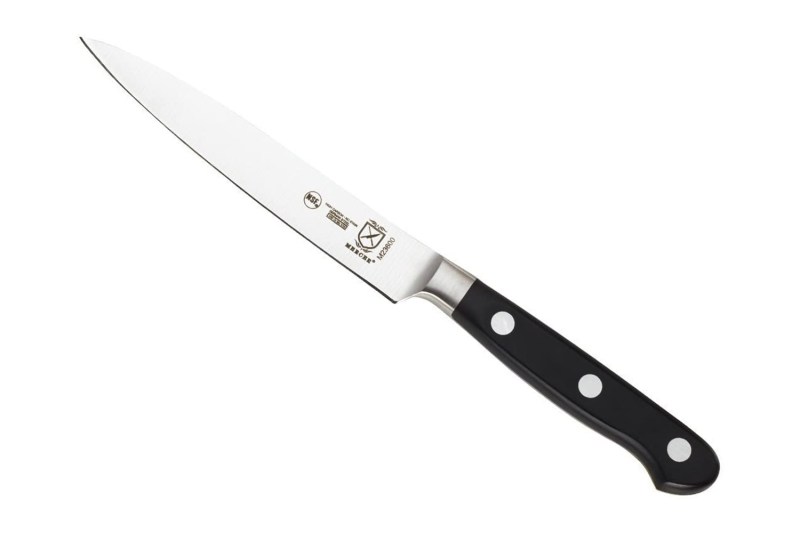
Utility knife: Mercer 5-Inch Utility Knife
This is another general-use knife. It gives you a little better handling than a chef’s knife for tasks like coring, trimming, and deboning. This Mercer 5-Inch utility knife is well-balanced and durable.
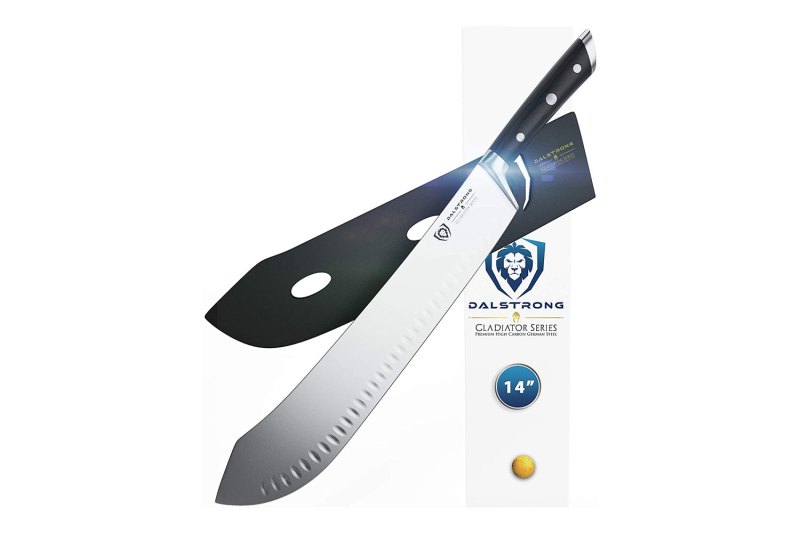
Butcher’s knife: Dalstrong 14-Inch Bullnose
A butcher’s knife is like the meat cleaver’s dad. Its thicker blade is good for chopping and slicing up big hunks of meat, but offers less precision than the cleaver. Honestly, they aren’t really needed in a personal kitchen, but man, they’re fun to have around if the occasion to break down a whole pig arises. We’d suggest this German Dalstrong 14-Inch Bullnose butcher’s knife.
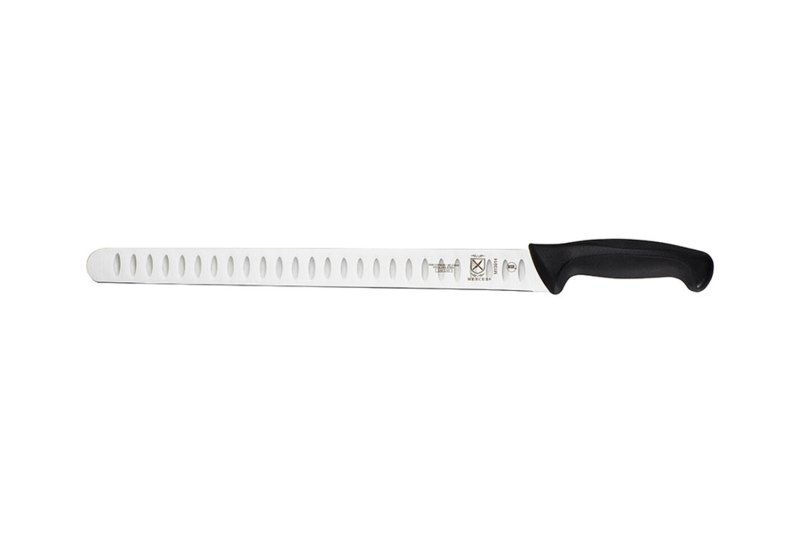
Carving knife: Mercer Culinary Millennia Granton Edge Slicer 14-Inch
Carving knives have narrow blades that form a pointed tip and are built for tasks like carving up your Thanksgiving turkey or Christmas ham. The blade is designed for less resistance as you cut into the meat, resulting in thin, uniform slices. The 14-Inch Mercer Mercer Culinary Millennia Granton Edge Slicer is used in professional kitchens everywhere.
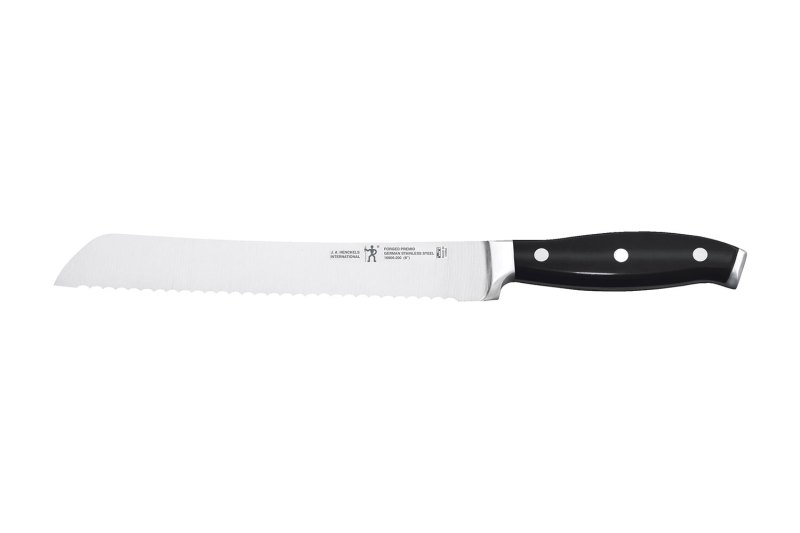
Bread knife: Henkle’s Forged Premio 8-Inch Bread Knife
Bread knives have long blades and serrated edges so they can easily cut through crusty breads, fluffy cakes, or softer meats and produce without crushing or destroying them. They’re also great at sawing through fingers, so be careful! The Henkle’s Forged Premio 8-Inch Bread Knife will be a part of your knife kit until it’s lost or stolen.
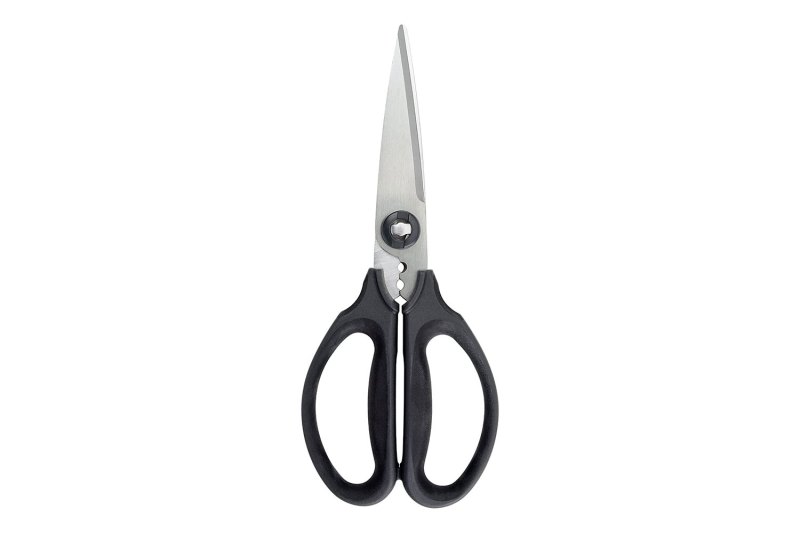
Kitchen shears: OXO Good Grips Multipurpose Kitchen and Herbs Scissors
Kitchen shears aren’t technically knives but are crucial for a complete cutlery set. They do the dirty work from cutting the tips off ribs to stripping rosemary branches. A good pair will come apart for easy cleaning. The OXO Good Grips Multipurpose Kitchen and Herbs Scissors will get the job done at a reasonable price.
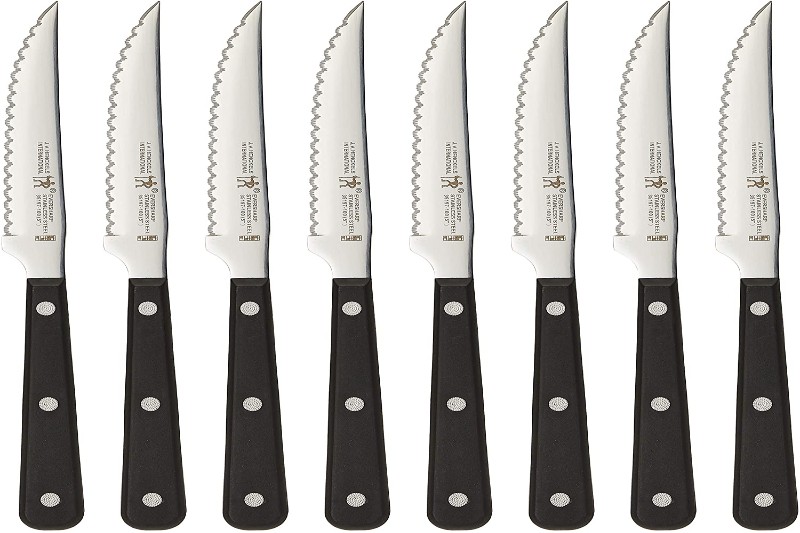
Steak knife: J.A. Henckels International 8-Piece Steak Knife Set
If you’ve ever sat down to enjoy a juicy steak without one of these, you know how necessary they are. Best for during-meal use to cut steak, chicken, pork, and anything else that lands on your dinner plate. This J.A. Henckels International 8-piece steak knife set will stay sharp for a lifetime and look great on the table setting.
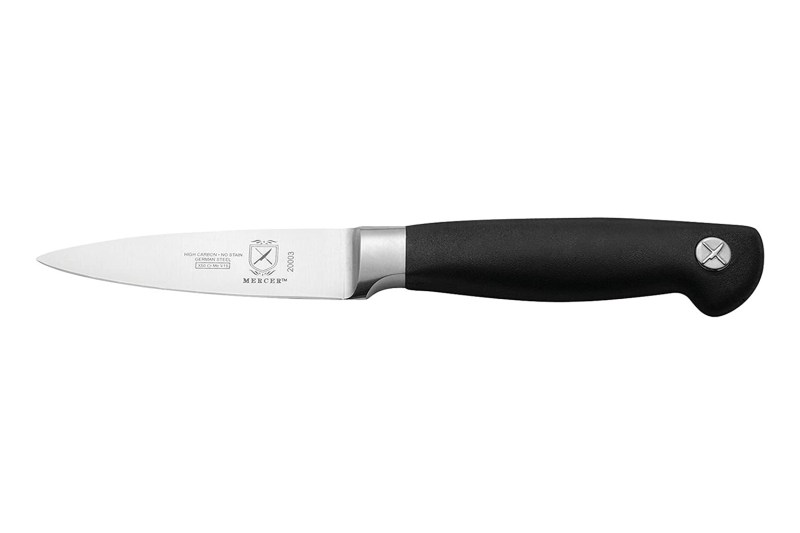
Paring knife: Mercer Culinary Genesis Forged Paring Knife
The paring knife is familiar to most kitchens and is better for more precision tasks than a chef or utility knife. It can be used to finely slice smaller produce or devein shrimp. There’s no need to go for a crazy-expensive paring knife, sometimes less is better. The Mercer Culinary Genesis Forged Paring Knife will do a great job at a great price.
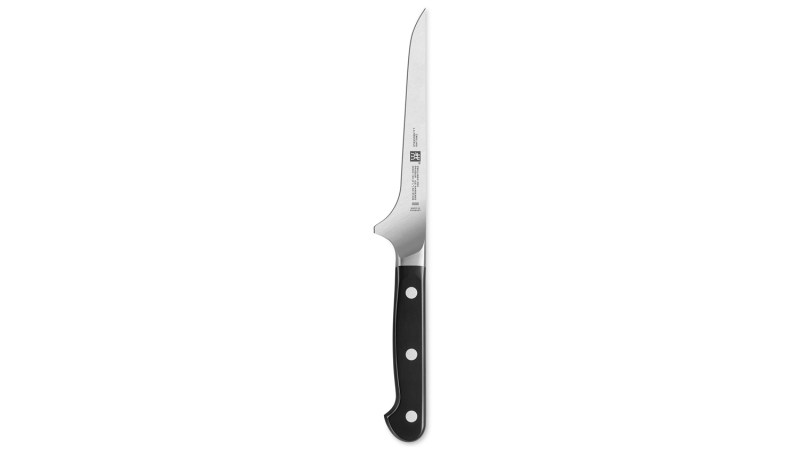
Boning knife: Zwilling J.A. Henckels Professional S Flexible Boning Knife
Not surprisingly, a boning knife is built to remove bones from raw meats, but it’s also excellent for butterflying things like pork chops and chicken breasts. It has a narrow blade with a curved bottom. You can find boning knives with flexible blades, good for fish and poultry, or stiff blades, which are better for beef and pork. This Henckels Professional S Flexible Boning Knife feels great in your hand and has a superior edge that can be easily honed back to its factory sharpness.
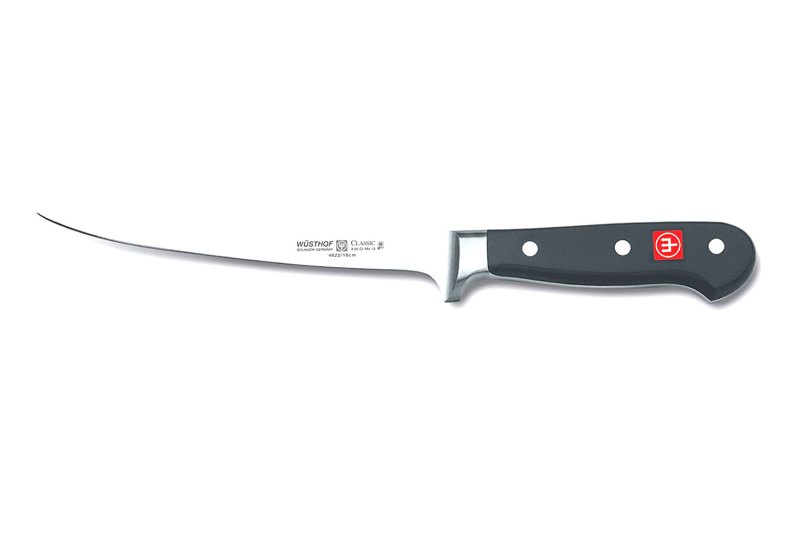
Fillet knife: Wusthof 4622-7 Classic 7-Inch Fillet Knife
Fish is very delicate and is tough to properly handle with standard knives. The fillet knife has a thin, flexible blade that makes it much easier to remove the skin from fresh fish. If you happen to be a fisherman who needs to skin fish all the time, just like with the chef’s knife, you can’t beat this Wusthof Classic.
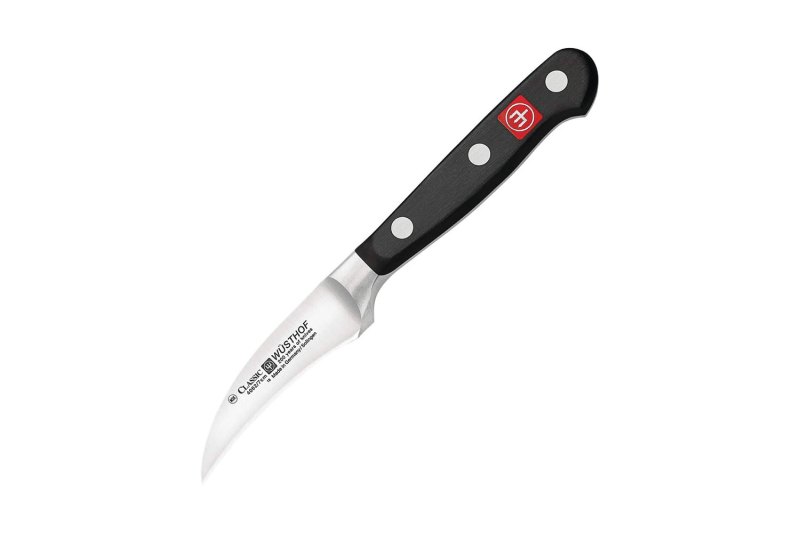
Peeling knife: Wusthof Classic 2.75-Inch Peeling Knife
Now we’re beginning to get into the more eclectic knives that are partly for show, partly for special occasions. Although a paring knife can do the same job, the peeling knife’s (tourne knife) curved blade makes peeling round fruits and vegetables that much easier. This Wusthof won’t disappoint.
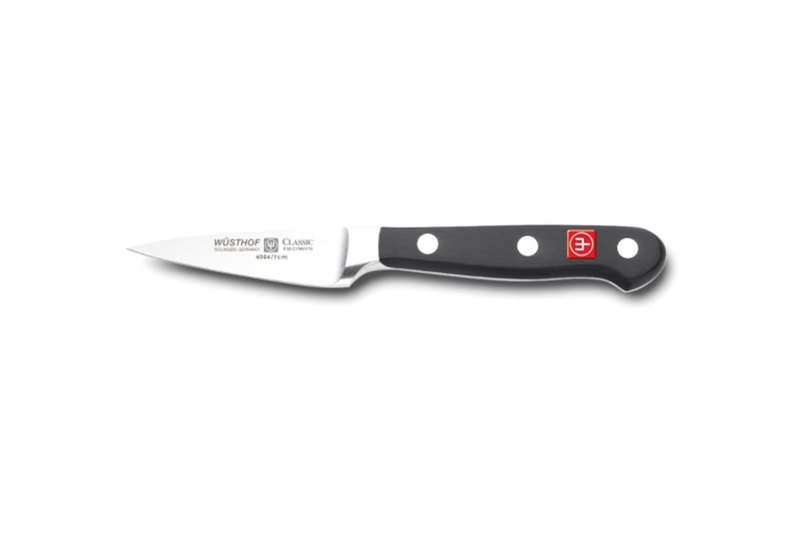
Fluting knife: Wusthof CLASSIC Fluting Knife
For small or super delicate produce, a fluting knife is better for peeling. The blade is typically between 2 and 4 inches long, with a lightweight and short, straight blade that’s easy to maneuver in tight spaces.
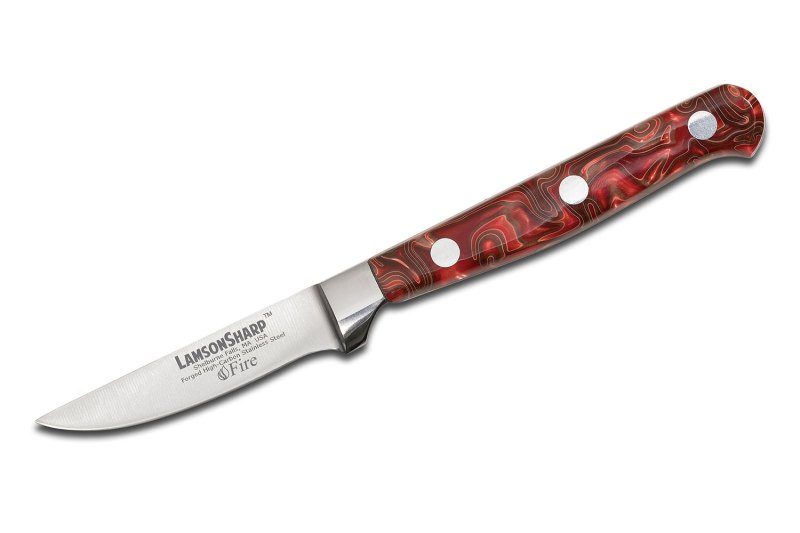
Trimming knife: Lamson Fire Forged 2.875-Inch Trimming Knife
A trimming knife is similar to a fluting knife (typically between 2 and 3 inches long) but has a more curved blade that is similar to a boning knife. It’s good for peeling and slicing small produce as well as creating decorations like those radish roses you get at fancy Asian restaurants.
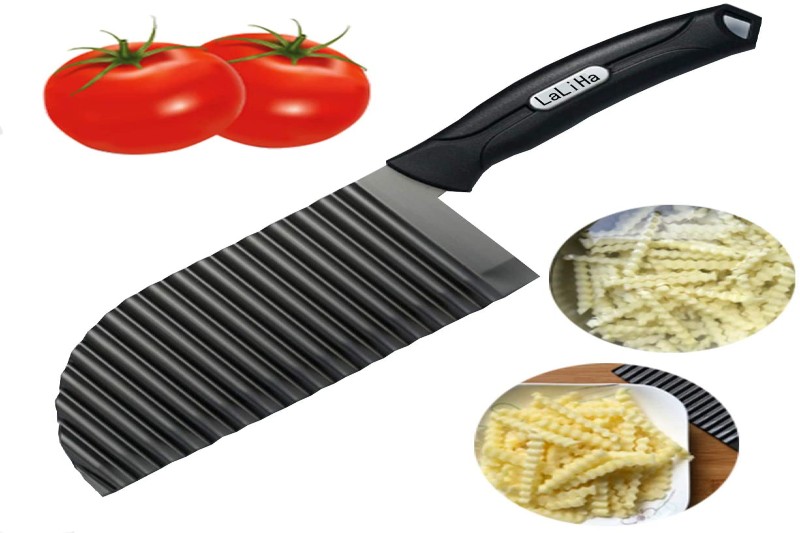
Garnishing knife: LaLiHa Crinkle Cutter Garnishing Knife
Have you ever had the overwhelming urge to make your own crinkle-cut fries like you get in the frozen food aisle? Well, you can do it with a garnishing knife. The LaLiHa Crinkle Cutter Garnishing Knife is an affordable option for this very niche knife.
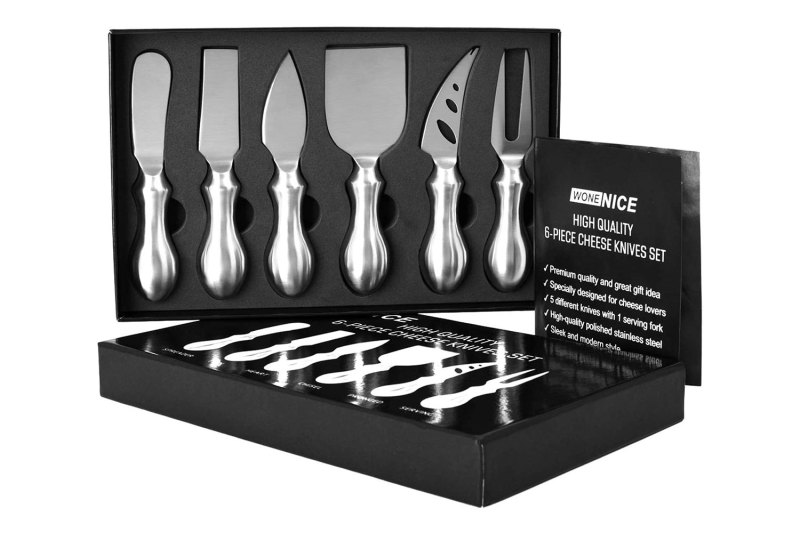
Cheese knives: WoneNice Premium 6-Piece Cheese Knives Set
A cheese knife is for … cutting … the cheese. Heh. But seriously, they’re specially designed to slice cheese without sticking to or crumbling it. Hard cheeses require a knife with a stiffer blade, while cheese knives with holes in the blade are designed for soft cheeses. Impress your friends at your next dinner party with this lux WoneNice Premium 6-Piece Cheese Knives Set.
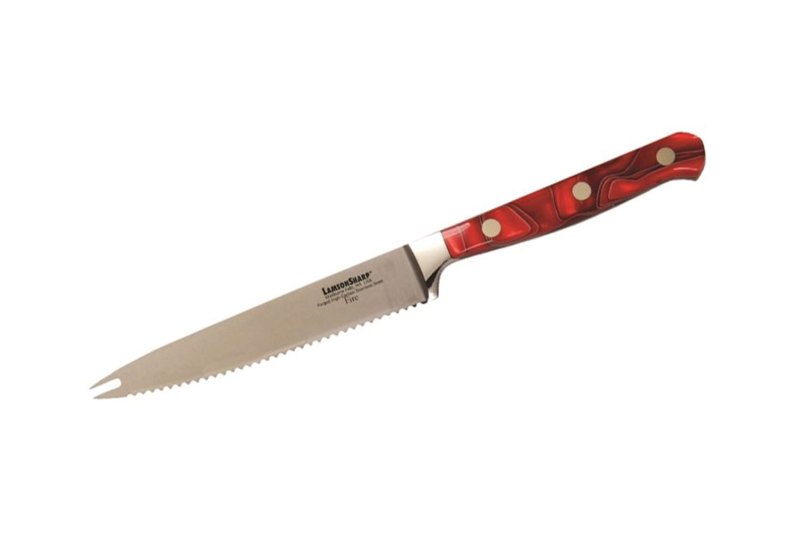
Tomato knife: Lamson Fire Forged 5-Inch Tomato Knife
A tomato knife is specially built for slicing tomatoes without crushing all the juice out of them and has a long pointed tip that can be used for coring and for transferring fresh slices from the cutting board to your plate. It can also be used for citrus fruits. If you’ve added all of the above knives to your collection and a Lamson Fire Forged 5-Inch Tomato Knife, go and pat yourself on the back. Your knife set is extensive and complete.
Kitchen knife safety
Of course, there’s a good reason behind that annoying rule we had growing up. Knives are, in the end, pretty dangerous weapons. One wrong slice or dice and it’s off to the emergency room. Apart from having a great set of knives to work with, knowing how to use them properly is crucial. These are a few tips to keep your fingers intact:
- Always keep your knife sharpened. It may sound counterintuitive, but a sharp knife is a safe knife. If your blade is dull, you will use unnecessary force, which can result in chopped fingertips.
- Keep your cutting board stable by placing a wet paper towel underneath it. This will keep the board from slipping around under your knife.
- Master the knife grip called “The Claw.” You do this by tucking the fingertips of the hand holding the ingredient slightly and resting your knuckles against the blade of the knife. This ensures your fingertips are protected and that you won’t cut them in the slicing and dicing process. Shown here:

Editors' Recommendations
- Learn how to make perfect grill marks every time
- What is caviar? A seafood expert breaks down all the details
- How to grill fish like an executive chef
- How to break a fast — the best foods to eat
- How to age fish at home (your new favorite hobby)




